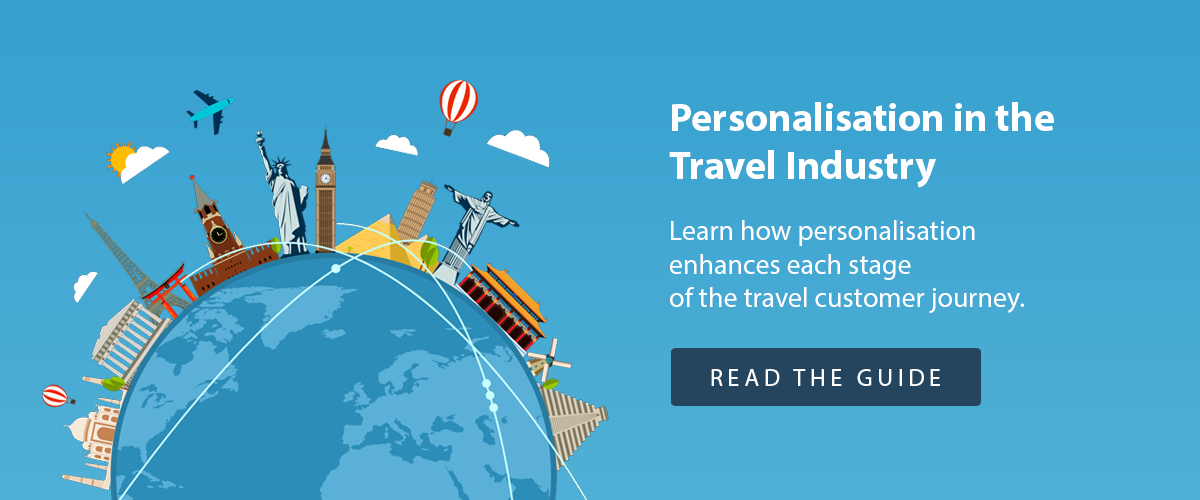Not many people can afford to pay for multiple holidays every year, but that doesn’t stop the travel companies from trying to sell to you; some even try every single day.
Email marketing is the perfect way for these companies to position their offers in front of potential customers. Many recipients will be at work, stuck on their desks and daydreaming of getting away from it all. Then BOOM! A fantastic holiday offer lands in their inbox and their impulses take over.
But what techniques do they use to tempt travellers and secure sales? Let’s have a look at a few ways holiday companies use email marketing to convert recipients.
Email send frequency
As an experiment, Econsultancy’s Christopher Ratcliff signed up to nine different travel websites to see how often each sent emails, and how they presented their offers. The brand names he chose were EasyJet, Ryanair, Thomas Cook, Secret Escapes, Voyage Prive, Expedia, Mr & Mrs Smith, The Weekenders, and Skyscanner. Here’s how the amount of emails per company looked like after two weeks:
• Secret Escapes: 13
• Voyage Prive: 6
• Expedia: 4
• Thomas Cook: 3
• Mr & Mrs Smith: 3
• Easyjet: 2
• Skyscanner: 0
• Ryanair: 0
• The Weekenders: 0
The bottom three on the list are clearly not capitalising on the customer’s interest; when someone subscribes to your emails, they want you to email them! Meanwhile, Secret Escapes might be overdoing it a tad.
Whilst not included in Ratcliff’s experiment, companies like Groupon, Travelzoo and LivingSocial Escapes also send emails every single day. However, they also offer other deals, like discounts on event tickets and restaurant vouchers; as a result, their emails arguably don’t come across as overbearing, as the offers are different. The prices for staycations – i.e. holidays inside the UK – are often so reasonable that they wouldn’t break the bank. It’s conceivable that the average person could actually afford one of these trips every few months.
Think about how you’d feel if you were a customer – would you feel spammed, or would you consider each email relevant?
Travel email offers
Without a hint of a great offer, it’s unlikely people will open your emails at all (unless they’re familiar with your brand). The subject lines used the companies in Ratcliff’s experiment show a vast range of styles, from straight-up discounts (‘A summer of football and 40% off selected holidays’ – Thomas Cook, ‘Sardinia, Marrakech, Canada, Jersey and Italy save up to 70 percent’ – Voyage Prive), to short snappy teasers (‘Stop, Look, Save!’ – Expedia, ‘Our Sunday Best’ – Secret Escapes).

Image courtesy of Christopher Ratcliff and Econsultancy.com
Travel email marketing messages must be relevant, but you could also add some personalisation. You could target the holiday offers in your email towards each recipient by analysing your customer data and pinpointing their browsing history on your website. What previous holidays have they booked? How long ago was it? The aim of the game is to get some holiday bookings, so showing the customer you care about their experience is effective.
Only one of the emails received by Ratcliff was personalised, and that was from EasyJet, who included his first name in the subject line. However, he points out that the majority of emails included “a lot of generic deals and offers that don’t exactly scream ‘open’”, so how else do travel companies entice the recipient to open?
Some include symbols in their subject lines, but there is a fine line between looking fun and looking like spam. Ratcliff notes that Travelocity achieved a 10.7 per cent lift in unique opens by using a little aeroplane in its subject line, but you’d be wise to A/B test this strategy before sending to the majority of your contacts.
Travel email design
The picture is pivotal; without a great snap, how on earth can the people you’re emailing imagine themselves there? The way that Groupon, LivingSocial Escapes and Travelzoo present their holiday offers in their emails is quite similar, but let’s take a closer look.
In the Groupon Getaways email below, we can see how they lead with a particular offer, and then present the rest of their deals in smaller windows below. They even go as far as to give a hint of how many others have purchased the deal so far, giving the offer a sense of urgency and an inclusive feel. However, note the distinct lack of enticing call to actions (CTAs) on the smaller deals.

LivingSocial Escapes, on the other hand, opts not to have a lead offer, and instead produces big, bold, blue CTAs on every offer.

Travelzoo, below, has no CTAs at all other than the description of the offer itself. They let the picture and the deal do all the talking.
The more you can find out about your contacts before you email them, the more targeted your emails can be – and this in turn can influence your travel email design. Do you have one deal that you think they’ll go crazy for, perhaps because they’ve bought something similar in the past? Then display that deal loud and proud.
To learn more about the email techniques used by travel companies, check out the Econsultancy experiment here.

